Shade plants are a gardener’s secret weapon for transforming dim, overlooked corners into lush, thriving landscapes. Whether you’re working under a tree canopy or alongside a north-facing wall, the right plants can bring vibrant color, varied texture, and long-lasting foliage to low-light spaces. Unlike their sun-loving counterparts, shade plants require less watering, resist many common garden pests, and often demand less maintenance overall. With their soothing palette and graceful structure, they’re perfect for creating a peaceful retreat right in your backyard.
Let’s walk through ten of the best-performing, beautiful shade plants to brighten up your shady spots — each chosen for their resilience, unique charm, and ability to thrive where sunlight is scarce.
Table of Contents
1. Bloodroot (Sanguinaria canadensis)
If you’re looking for native shade plants with a touch of woodland charm, bloodroot is a standout. Emerging in late winter or very early spring, this perennial brings delicate white flowers that seem to glow in low light. The blooms are fleeting — often lasting only a few days — but the attractive, lobed foliage hangs around well into summer, adding consistent texture to shaded beds.
Bloodroot prefers humus-rich, well-drained soil and thrives in partial to full shade. It’s slow to establish but worth the patience. Over time, it forms lovely colonies, making it a natural fit for planting beneath trees or along shady slopes. This ephemeral wildflower is ideal for gardeners seeking early-season interest without overwhelming maintenance.
Quick facts:
- Type: Perennial
- Bloom Time: Late winter
- Color: White
- Height: 6–12 inches
- Light: Part to full shade
- Hardiness: Zones 3–9
2. Monkshood (Aconitum napellus)
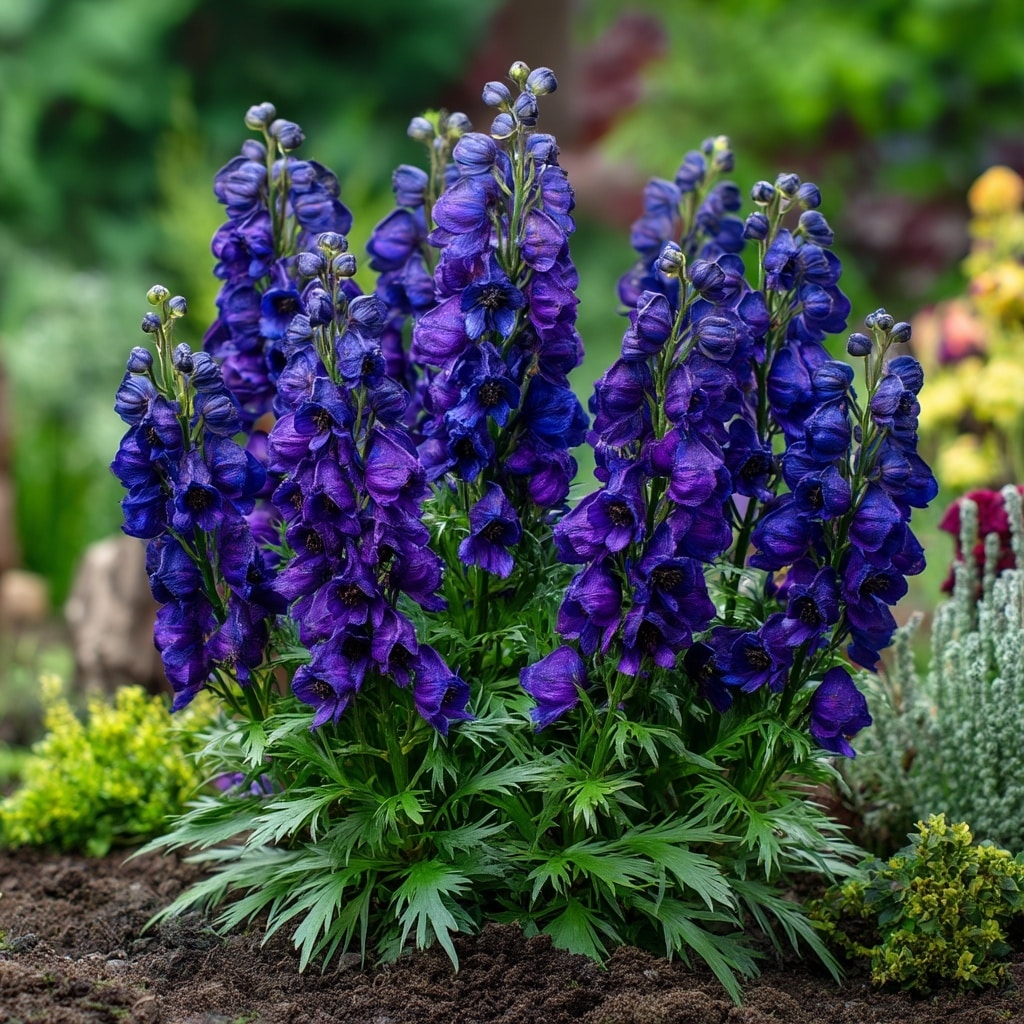
Monkshood is one of the most dramatic shade plants you can grow, with tall spires of deep violet-blue blooms that rise above finely divided foliage. Blooming in late summer, it adds vibrant color just when many other shade flowers are fading. Its stately height and bold form make it ideal for back borders or along shady fence lines.
This plant thrives in cool, moist environments and performs best when grown in partial to full shade with consistently damp soil. It’s not fond of hot temperatures, so in warmer climates, choose a cooler, shaded location and mulch well to retain moisture. Important note: all parts of monkshood are highly toxic if ingested, and its sap can irritate skin — always wear gloves when handling.
Quick facts:
- Type: Perennial
- Bloom Time: Midsummer to early fall
- Color: Blue, violet, pink, or white
- Height: 2–4 feet
- Light: Part to full shade
- Hardiness: Zones 3–7
3. Brunnera (Brunnera macrophylla and hybrids)
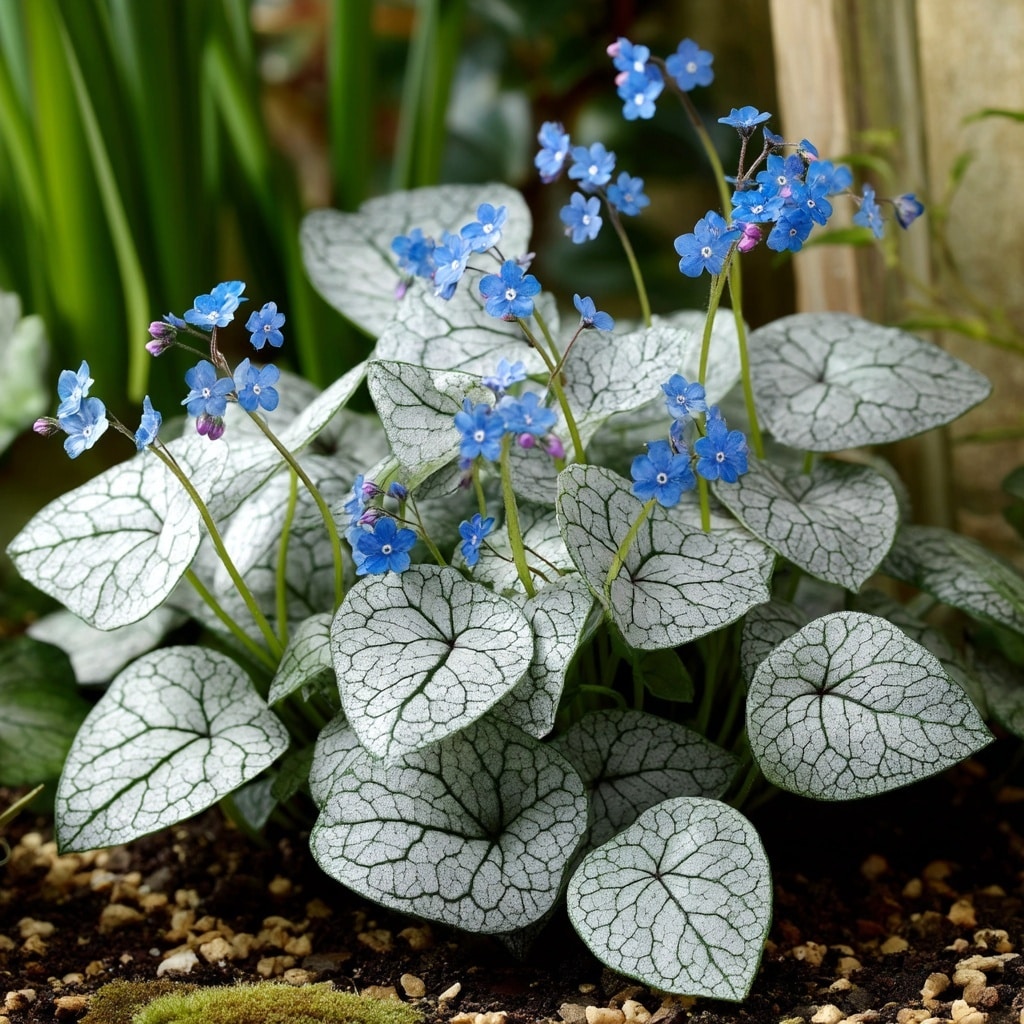
Brunnera, often called Siberian bugloss, brings shimmering beauty to any shady garden. As one of the most reliable shade plants, it offers heart-shaped foliage that ranges from deep green to stunning silver-patterned varieties like ‘Jack Frost’. In early spring, clusters of tiny, sky-blue flowers float above the leaves, resembling forget-me-nots and providing a cheerful splash of color.
This plant thrives in cool, moist, and humus-rich soil. Consistent moisture is essential — dry conditions can cause the leaves to wilt or die back. In warmer regions, full shade will help brunnera stay vibrant throughout the season. Its foliage alone adds long-lasting appeal, making it perfect for edging paths or filling in under trees where light is limited.
Quick facts:
- Type: Perennial
- Bloom Time: Spring
- Color: Blue
- Height: 12–18 inches
- Light: Part to full shade
- Hardiness: Zones 3–9
4. Trillium (Trillium sessile and other species)

Trillium is a treasured wildflower that thrives in woodland settings, making it a favorite among native shade plants. Its three-petaled flowers bloom in early spring, rising above distinctive mottled foliage that adds visual interest even after the blossoms fade. With their quiet elegance, trilliums bring a sense of serenity and authenticity to any shaded garden.
These perennials prefer rich, well-drained soil and light to full shade. Once established, they don’t like to be disturbed — and they don’t need to be. Trilliums are slow growers but will naturalize over time, forming colonies that return year after year. In hot or dry conditions, the plant may go dormant by midsummer, but it reliably re-emerges each spring.
Quick facts:
- Type: Perennial
- Bloom Time: Early to mid-spring
- Color: Purple, maroon, white (varies by species)
- Height: 6–12 inches
- Light: Part to full shade
- Hardiness: Zones 4–8
5. Astilbe (Astilbe hybrids)
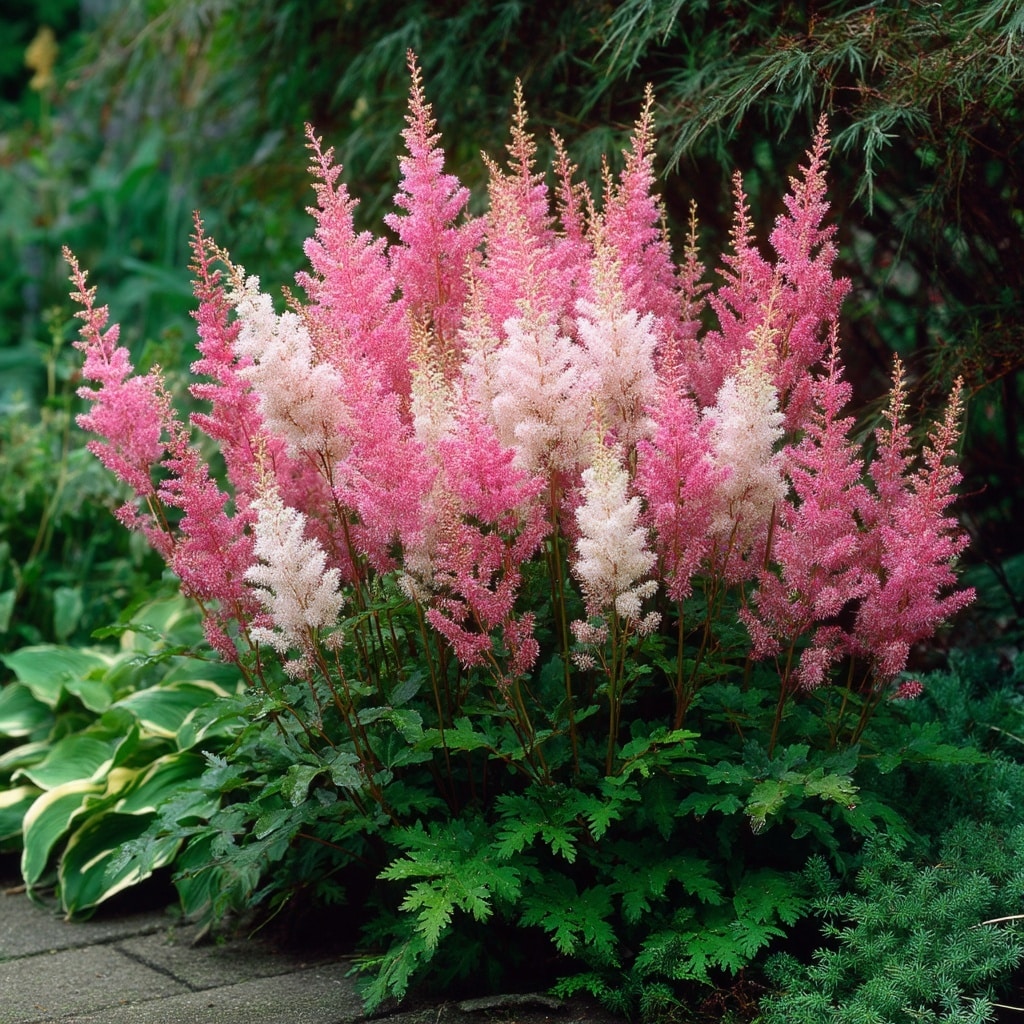
Astilbe adds softness and movement to shady spaces with its fern-like foliage and airy plumes of flowers. These fluffy blooms appear in shades of pink, white, red, and lilac, lighting up garden beds from late spring through early fall. As one of the most dependable shade plants, astilbe creates visual depth and contrast when planted in groups along paths or borders.
While astilbe can tolerate some morning sun, it thrives in part to full shade—especially in warmer climates. Moisture is key. Its shallow roots dry out quickly, so regular watering and organic mulch are essential to keeping this perennial looking lush. Choose from compact varieties for containers or taller types for layered garden beds.
Quick facts:
- Type: Perennial
- Bloom Time: Late spring to early fall
- Color: Pink, white, red, lilac, peach
- Height: 8–48 inches
- Light: Part to full shade
- Hardiness: Zones 3–9
6. Hellebore (Helleborus spp. and hybrids)
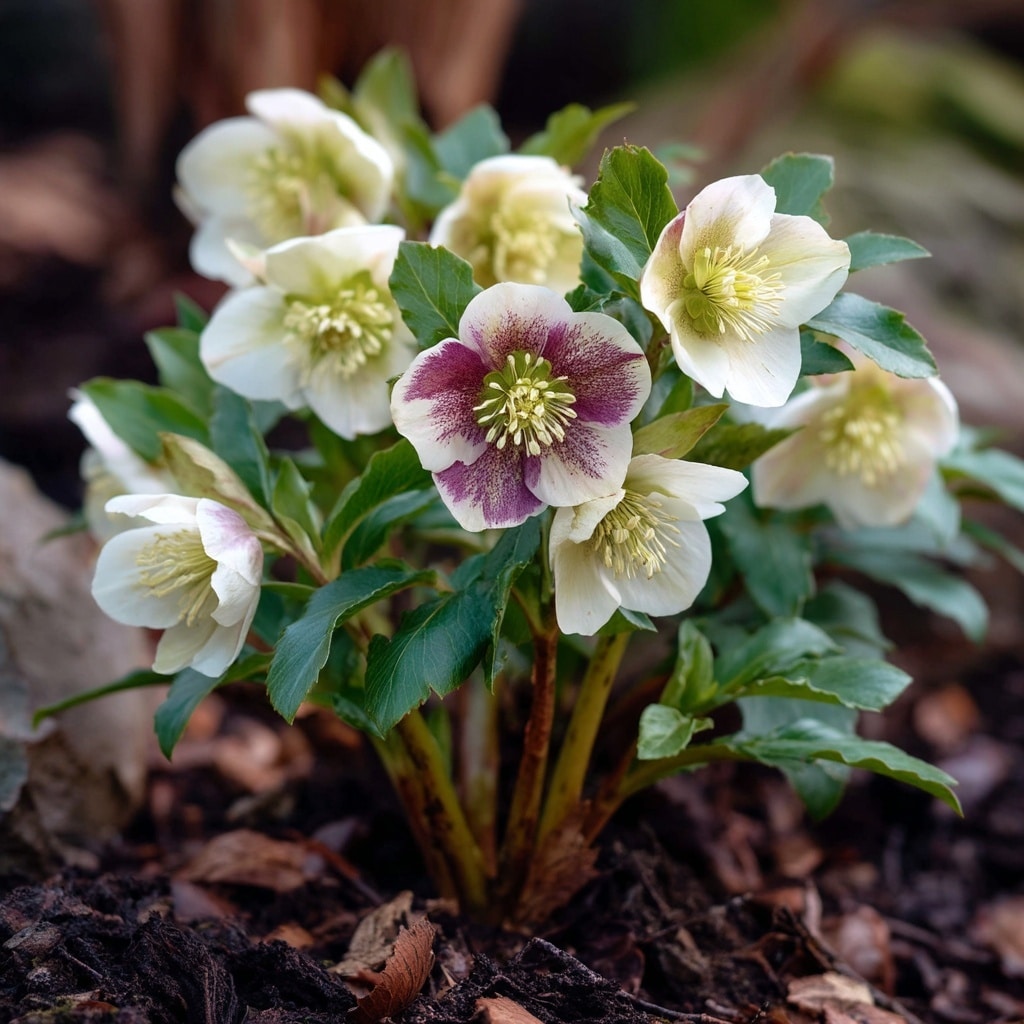
Hellebores are true champions among shade plants, blooming when little else dares — often from late winter through early spring. Their nodding, rose-like flowers come in elegant shades of white, burgundy, green, pink, and even near-black, adding rare winter color to the garden. Each bloom can last for weeks, making hellebores both beautiful and dependable.
These hardy perennials prefer rich, well-drained soil and do well in dry shade once established, making them a great choice for planting beneath trees. In colder regions, a loose mulch of shredded leaves or bark helps protect roots during winter. While they enjoy winter sun, hellebores benefit from dappled or full shade in summer, especially in hot climates.
Quick facts:
- Type: Perennial
- Bloom Time: Late winter to early spring
- Color: White, pink, yellow, burgundy, green
- Height: 12–36 inches
- Light: Part to full shade
- Hardiness: Zones 4–9
7. Yellow Corydalis (Corydalis lutea)

Yellow corydalis brings a cheerful pop of color to shady areas with its delicate, fern-like foliage and abundant golden-yellow blooms. It begins flowering in spring and often continues sporadically into fall. As one of the more underrated shade plants, it’s a great choice for softening the edges of paths, walls, or rock gardens in low-light spaces.
This hardy perennial thrives in cool, moist, shaded conditions but can go dormant during hot summer months. If the foliage looks tired, simply cut it back — fresh new growth will often return with the cooler weather of fall. Yellow corydalis is also self-seeding, which allows it to naturalize easily without becoming invasive.
Quick facts:
- Type: Perennial
- Bloom Time: Spring to early fall (intermittent)
- Color: Yellow
- Height: 4–18 inches
- Light: Part to full shade
- Hardiness: Zones 5–8
8. Epimedium (Epimedium spp. and hybrids)
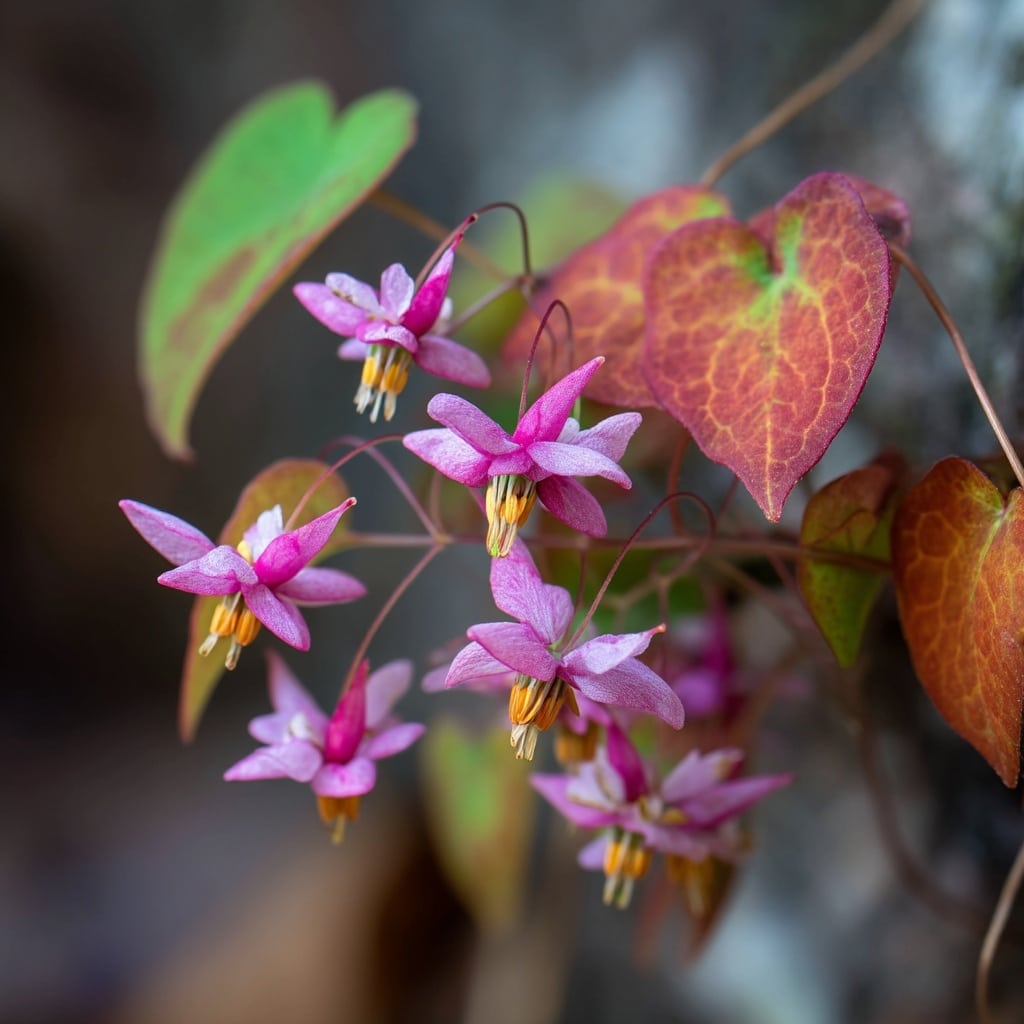
Epimedium, sometimes called barrenwort or bishop’s hat, is a graceful yet tough choice for shady spots. It’s especially valued for its delicate, orchid-like spring blooms and durable heart-shaped foliage. In cooler months, many varieties develop reddish or bronze tones, giving your garden year-round interest. Among shade plants, few combine beauty and resilience as effortlessly as epimedium.
This plant excels in dry shade, making it a top pick for areas under mature trees or along shaded borders where other plants may struggle. It thrives in well-drained, organic-rich soil but adapts to less-than-ideal conditions once established. A great low-maintenance groundcover, epimedium spreads slowly and requires little care beyond occasional watering in its first year.
Quick facts:
- Type: Perennial
- Bloom Time: Early spring
- Color: White, yellow, pink, red, orange, or lavender
- Height: 4–24 inches
- Light: Part to full shade
- Hardiness: Zones 4–9
9. Christmas Fern (Polystichum acrostichoides)
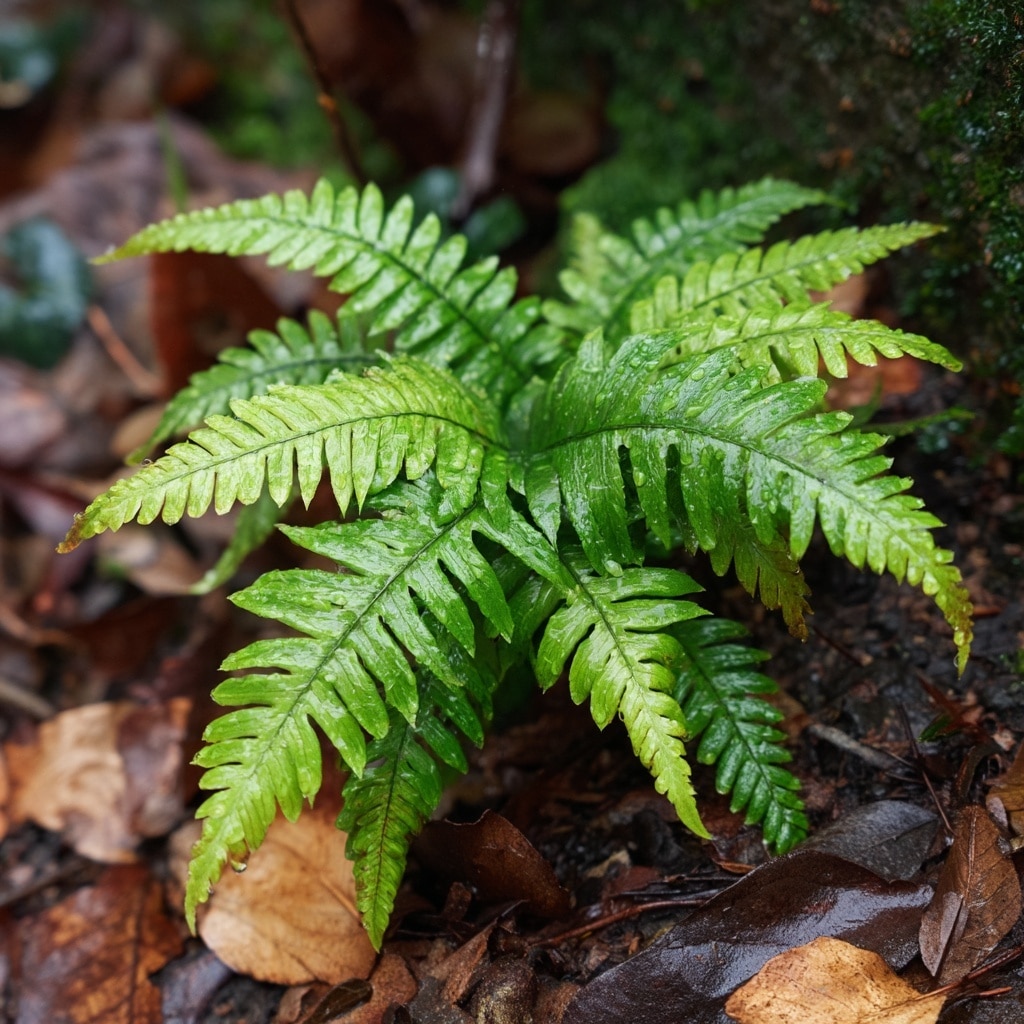
Christmas fern earns its name from the lush, evergreen fronds that stay green even through the coldest months, offering texture and structure all year long. It’s one of the most reliable native shade plants, perfect for stabilizing slopes, filling woodland borders, or adding contrast to softer foliage in shaded garden beds.
This fern forms tidy, clumping mounds and doesn’t spread aggressively like some other fern varieties. It adapts to a wide range of soils, from rich and loamy to rocky and lean, making it incredibly versatile. Best of all, it’s deer-resistant and virtually maintenance-free once established — just give it part to full shade and occasional moisture during dry spells.
Quick facts:
- Type: Perennial fern
- Bloom Time: None (foliage plant)
- Color: Deep green
- Height: 12–24 inches
- Light: Part to full shade
- Hardiness: Zones 3–9
10. Hosta (Hosta spp. and hybrids)

No list of shade plants would be complete without the beloved hosta. Known for its striking foliage, this classic perennial comes in countless shapes, sizes, and colors — from deep blue-green to vibrant chartreuse and variegated blends. While its lavender or white summer blooms add charm, it’s the bold leaves that truly steal the show.
Hostas thrive in rich, well-drained soil and perform best in part to full shade, though some gold or chartreuse varieties can handle more sun. They’re especially effective when planted in clusters or used as edging along shaded paths. Easy to grow and widely adaptable, hostas are a staple for low-light gardens — just be mindful of deer, who find them irresistible.
Quick facts:
- Type: Perennial
- Bloom Time: Mid to late summer
- Color: White or lavender blooms; varied foliage
- Height: 4–48 inches
- Light: Part to full shade
- Hardiness: Zones 3–9
Conclusion
Creating a beautiful garden doesn’t require full sun — with the right shade plants, even the dimmest corners can become vibrant, low-maintenance retreats. From early-blooming hellebores to foliage stars like hostas and ferns, these ten shade-loving perennials offer texture, color, and year-round interest without demanding much in return.
Whether you’re working with a woodland edge, the north side of your home, or a tree-covered backyard, these plants are proven performers. Choose a few favorites that suit your space and enjoy a lush, peaceful garden that thrives in the shade.


